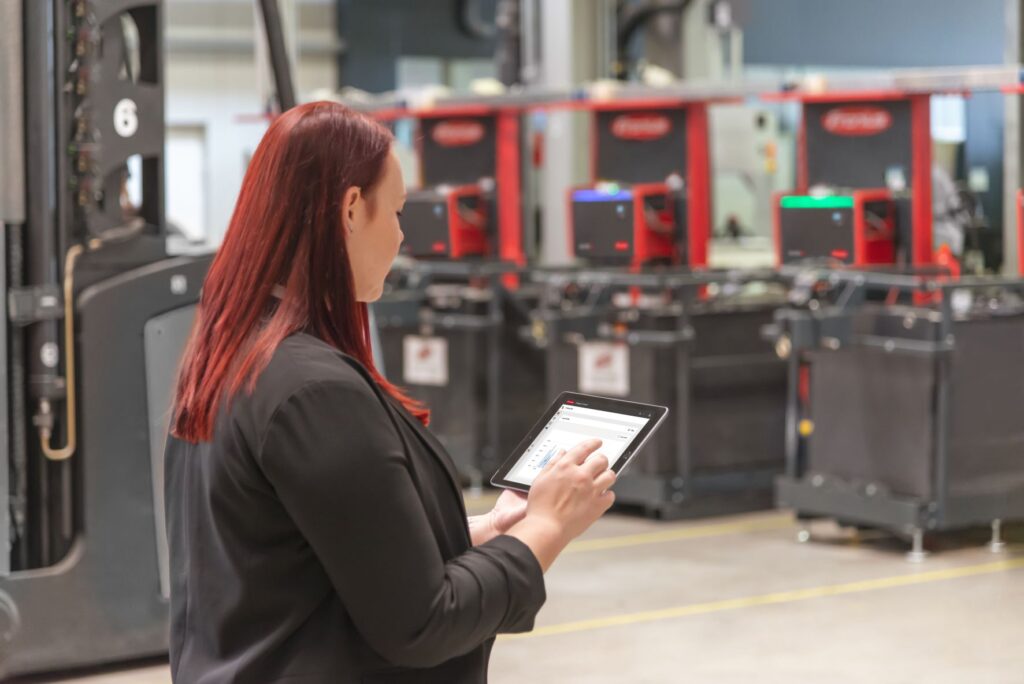Optimise energy consumption in-house
13th October 2022

Fronius Perfect Charging is offering a new effective tool for intralogistics to optimise energy consumption quickly and sustainably. With the “Load Balancing” function of the Charge & Connect software solution, fleet managers can reduce power peaks when charging lead-acid batteries and thus lower their energy costs.
Energy prices are rising massively. It is therefore even more important for companies to optimise their power consumption. One cost driver is electricity peaks. They occur when many consumers draw power at the same time – for example, when several lead-acid batteries of the electric forklift fleet are charged simultaneously. This short-term heavy load on the grid can lead to an excess of the agreed power quota, resulting in expensive additional payments and higher grid provision charges. Fronius Perfect Charging has developed a solution for this: the “Load Balancing” function of the renowned Charge & Connect connectivity software offers the opportunity of harmonising peak loads when charging lead-acid traction batteries. This prevents short-term overloads and reduces energy costs. The availability of the fleet is thereby ensured.
“The load balancing runs automatically – thanks to our intelligent charging algorithm. Once the function is activated in the Charge & Connect portal, the fleet operator can set parameters such as shift model and battery availability requirements,” explains Andreas Prielinger, Global Director RnD. “What is unique about it is that there are hardly any comparable solutions on the market for lead-acid batteries.”
The software analyses the charging process and defines the optimal and most energy-efficient charging strategy – be it through stretching, staggering or a combination of both. In this way, the required number of fully charged batteries are always available without generating heavy power peaks. Significant advantages also result from the fact that the charging curve can be individually adapted to the battery requirements as well as further charging stations or rooms can be flexibly expanded.
“Load balancing is thus a simple and at the same time efficient tool for every forklift fleet operator to keep the base load of the charging infrastructure as constant as possible and to sustainably reduce electricity consumption and costs,” Prielinger sums up.

